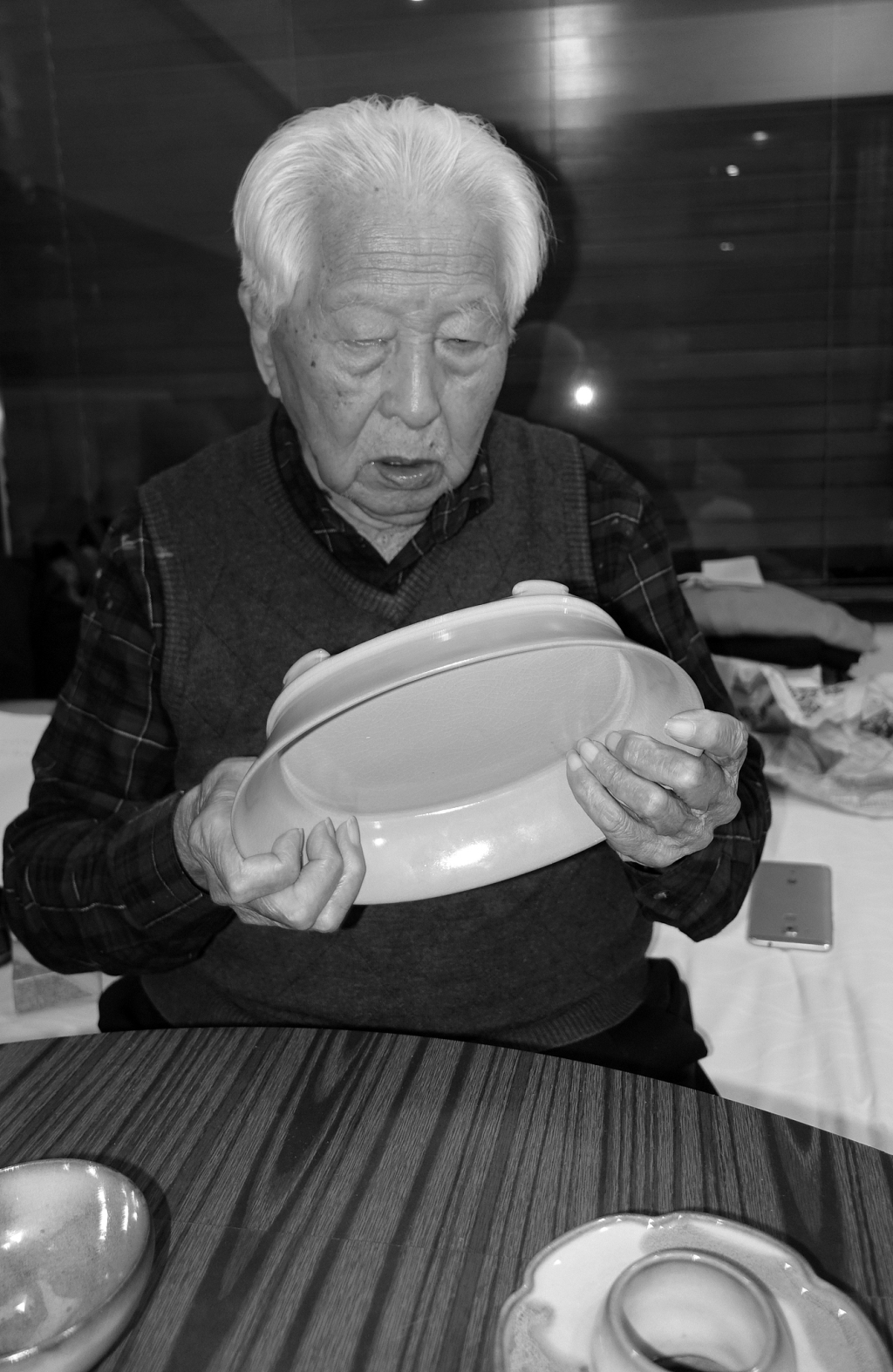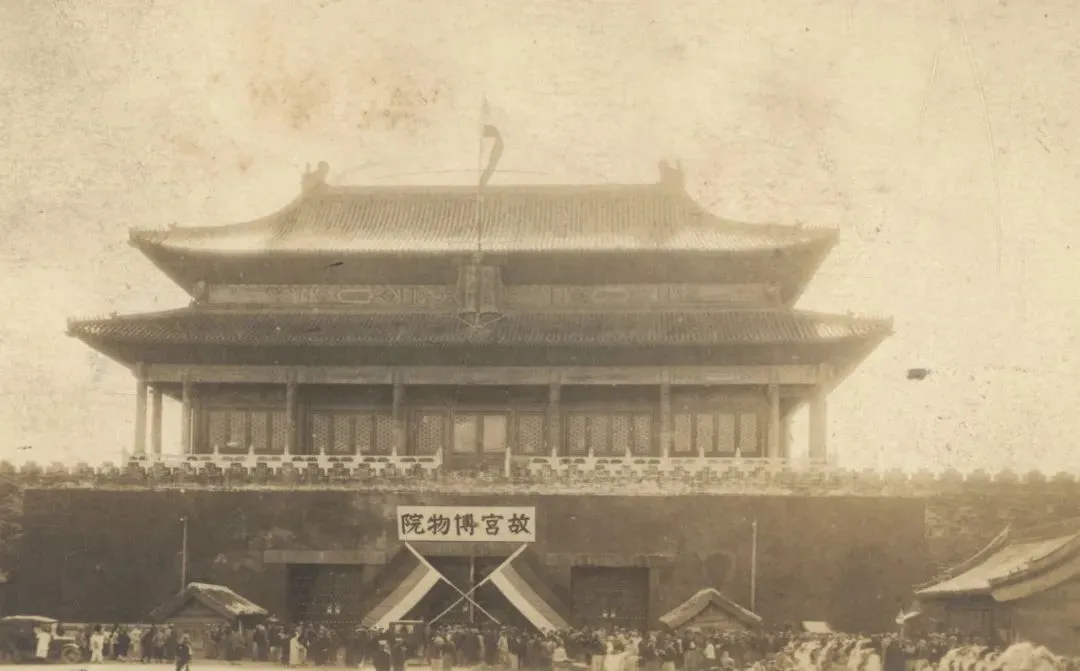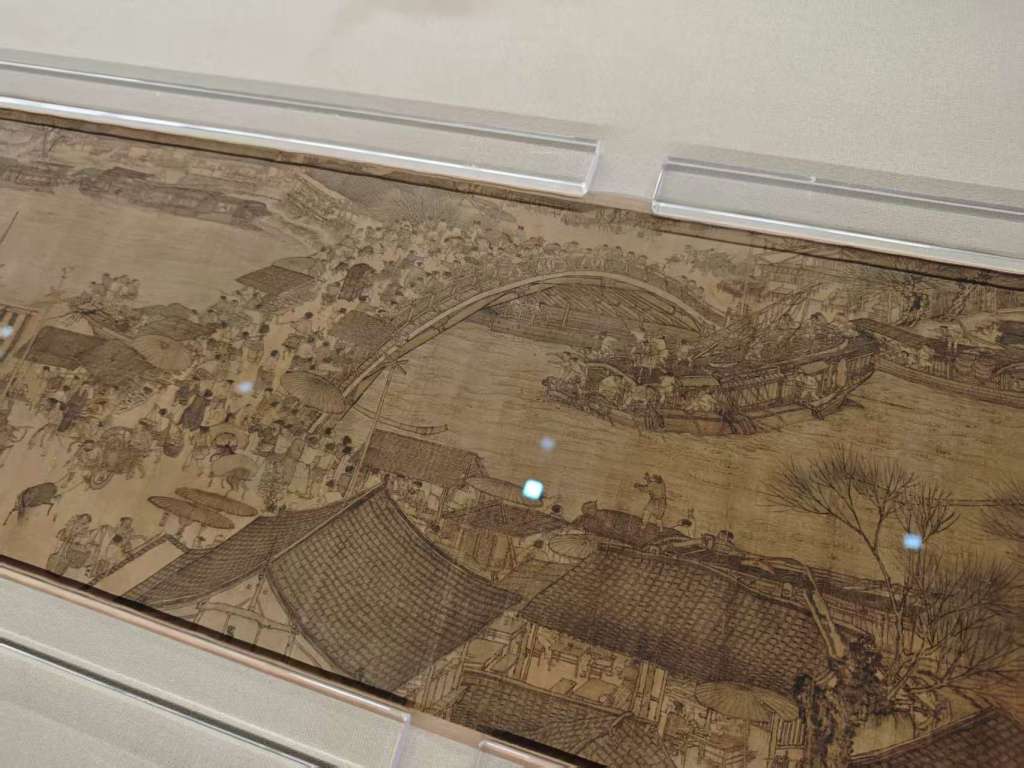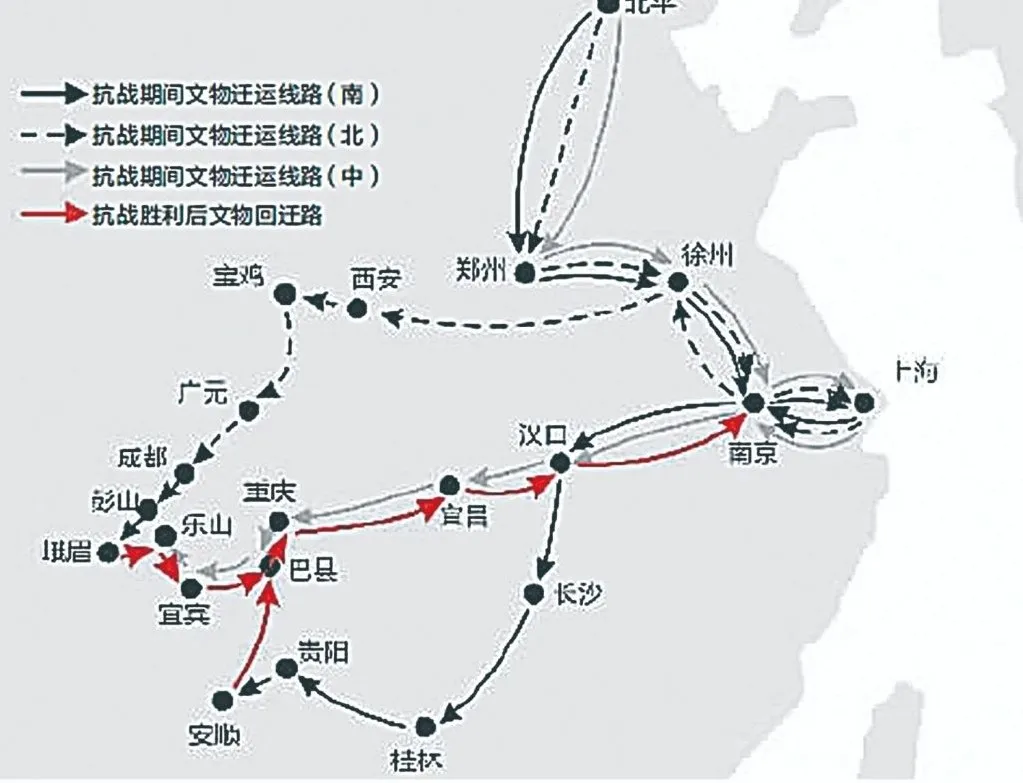
On the occasion of the 100th anniversary of the founding of the Palace Museum, looking back on the past, the migration of the Palace Museum's cultural relics to the south was undoubtedly a glorious period in the history of the Palace Museum.
Recently, the Palace Museum held a special exhibition commemorating the Southern Migration of Palace Museum Cultural Relics at Shenwu Gate. Four thousand miles away, in the ancient town of Jiuzhou, Anshun, Guizhou, one of the sites where the Palace Museum's cultural relics were relocated, the exhibition "Tongguang of China: A Special Exhibition of Palace Museum Cultural Relics Relocated to Anshun" showcased a fragment of the exhibition, showcasing the relationship between the Southern Migration of Palace Museum cultural relics and Guizhou. It is reported that during the War of Resistance Against Japanese Aggression, to protect the cultural treasures of the Chinese nation from the flames of war, over 13,000 boxes of Palace Museum cultural relics were relocated south from Beijing. This journey, spanning over two decades of unrest and thousands of miles, represents a miracle in the history of world cultural heritage preservation.

Map of the Southern Migration of Cultural Relics from the Forbidden City

In 1933, the third batch of cultural relics gathered at Taihemen Square waiting to be dispatched.
Celebrating the 100th anniversary of the founding of the Palace Museum and the 80th anniversary of the victory of the Chinese People's War of Resistance Against Japanese Aggression, Beijing, Guizhou and other places have successively launched commemorative exhibitions of the Palace Museum's cultural relics moving south, revisiting this glorious period from different perspectives.
Zheng Xinmiao, former director of the Palace Museum, stated in Guizhou that the southward migration of cultural relics is not just a bygone era, but a legacy of spirit. "During those difficult years, our ancestors sacrificed their lives to protect not only cultural relics but also the cultural confidence of the Chinese nation. This spirit continues to hold important practical significance today."
Beijing's Forbidden City: A Century of Retrospection, a Panoramic View of Its Journey Southward
The "Memorial Exhibition of Cultural Relics from the Palace Museum's Southern Migration" recently opened to the public at the Shenwu Gate Exhibition Hall of the Palace Museum. The Palace Museum, integrating precious archival documents, images, and cultural relics with digital media technology, presents a multi-layered depiction of the arduous journey of the Palace Museum's southern migration, including its migration, storage, and exhibition, during the War of Resistance Against Japanese Aggression.

"Memorial Exhibition of the Palace Museum's Cultural Relics Migration to the South" (Photo by the Palace Museum)
The exhibition is divided into three units: "National treasures migrated south and returned north and remain forever", "Ancient artifacts are restored and cultural heritage is continued", and "The torch is passed on forever".
The first section, through archival documents, historical images, and actual artifacts from the southern migration, presents a comprehensive account of the Palace Museum's cultural relics' displacement and migration from the 1930s to the 1950s. The second section, through exhibition posters, newspaper and periodical albums, and catalogs, along with bronzes, porcelain, jade, calligraphy, and paintings, illustrates the process of selecting precious artifacts from the Palace Museum for exhibitions in London, Moscow, and Leningrad during the War of Resistance Against Japanese Aggression, as well as thank-you exhibitions held in Chongqing, Guiyang, and Chengdu.

Seals exhibited at the "Palace Museum Cultural Relics Southward Migration Memorial Exhibition"
The third unit showcases the integrity of Chinese culture and the inseparable connections between the National Palace Museum collections on both sides of the Taiwan Strait through cultural relics that migrated south, cultural relics that stayed in Ping, and figure sculptures. It also illustrates the outstanding continuity, innovation, unity, inclusiveness, and peace of Chinese civilization.
In the exhibition, a Northern Song Dynasty Jun kiln rose purple glaze diamond-shaped flowerpot tray is particularly eye-catching.
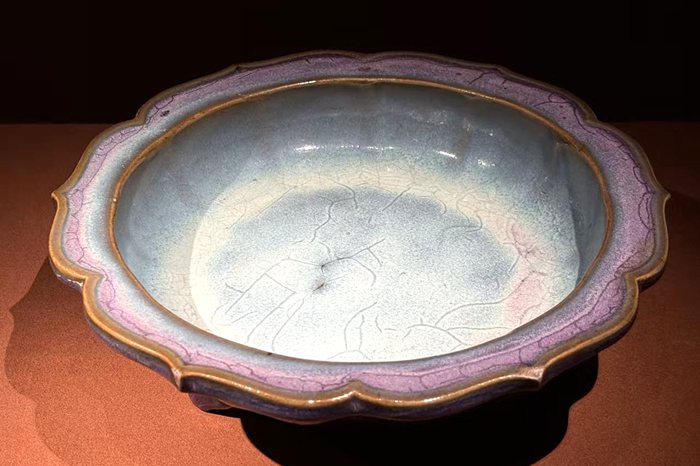
The first batch of cultural relics returned from the north in 1950: a Northern Song Dynasty Jun kiln rose purple glaze diamond-shaped flowerpot tray (Photo by Xu Baicheng)
This exquisite porcelain was among the first batch of cultural relics returned to the north in 1950. Its colorful glaze and elegant shape bear witness to the beginning and end of that war-torn period.
The exhibition also specially set up the "Group Sculpture of Figures with the Same Achievements as those on the Wall of Lu", which portrays representative figures in the process of the southward migration of the Palace Museum's cultural relics, paying tribute to the people from all walks of life who have worked hard to protect the roots of Chinese culture.
Anshun, Guizhou: Preserving memories, connecting cross-strait ties
In the ancient town of Jiuzhou in Anshun, Guizhou, the recently opened "China Tongguang - Special Exhibition of Cultural Relics Migrated from the Palace Museum to the 'Anshun Residence'" is one of the special exhibitions of the Colorful Guizhou 18th China Original Ecology International Photography Exhibition, focusing on the special relationship between the Palace Museum's cultural relics and Anshun during the Anti-Japanese War.
In 1939, 80 boxes of 1,022 treasures from the Palace Museum were secretly transferred to Huayan Cave in Anshun, Guizhou to avoid the war, and were hidden there for nearly six years.
This period of history has become part of Anshun's unique cultural memory. The special exhibition features 50 pieces of calligraphy, paintings, and photographic records by renowned Taiwanese photographer Zhuang Ling and emerging Taiwanese photographers, as well as approximately 15 replicas of items from the National Palace Museum.
"With 15 high-quality replicas of the Palace Museum's collection and 50 sets of paintings, calligraphy, and photographs, we've attempted to create a multi-dimensional cultural scene," said Hong Shicong, curator of the special exhibition and president of the Taiwan Photographic Museum Cultural Association, in an interview with local media. He visited Anshun ten years ago and was deeply captivated by its Tunpu culture. "Revisiting it ten years later, it's cleaner and more organized, but the cultural heritage remains as profound. We hope to promote in-depth cross-strait exchanges in culture, tourism, and academia through our visual creation."

"Zhonghua Tongguang - Special Exhibition of Cultural Relics from the Palace Museum's Southward Migration to 'Anshun Residence'" Xixiu Media
The exhibition includes reproductions of paintings and calligraphy such as Wang Xizhi's "Kuaixue Shiqing Tie" and Liang Kai's "Splashing Ink Immortal," as well as porcelain replicas such as a blue-and-white dragon-patterned celestial globe vase from the Yongle reign of the Ming Dynasty and a porcelain-based, foreign-color, blue-ground, golden fish-swimming spring water vase from the eighth year of the Qianlong reign of the Qing Dynasty. Zhuang Lingzheng, Honorary Chairman of the Taiwan Association of Photographic Museums, is a descendant of Mr. Zhuang Yan, a witness and guardian of the Palace Museum's cultural relics as they were relocated southward.
"I was born in Guizhou and lived in Anshun until I was six years old. Later, I moved to Taiwan," Zhuang Ling said at the exhibition's opening ceremony. "These precious replicas of cultural relics are presented to the public through this special exhibition, allowing more people to see and experience the charm of Chinese culture."
Zhuang Ling donated precious video documents to Guizhou. Through his lens, he completed a heartfelt dialogue spanning two generations and connecting the two sides of the Taiwan Strait.
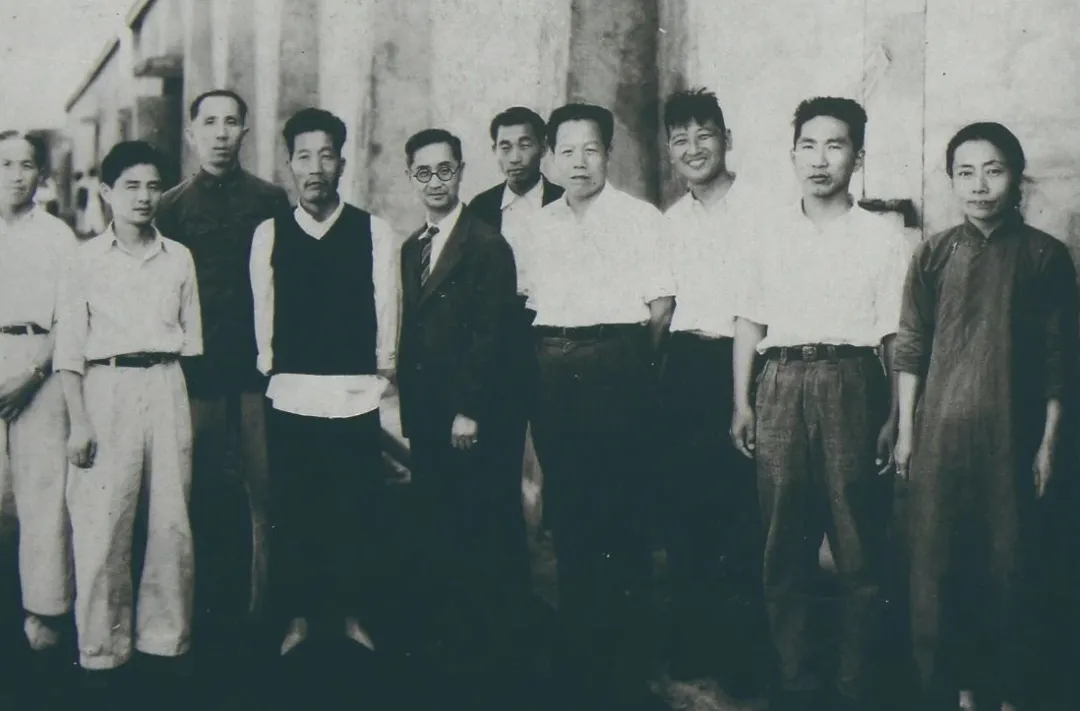
A group photo of some colleagues from the Palace Museum's Anshun Office, including Liu Eshi (first from left), Zhuang Yan (fifth from left), Shen Ruoxia (first from right), and Huang Yi (third from right). (The Paper)
The southward migration of the Palace Museum's cultural relics began on February 7, 1933, with the first shipment departing from Peking. By May 23, 1933, five batches totaling 13,427 boxes and 64 packages had arrived in Shanghai. In August 1936, the Chaotian Palace Cultural Relics Preservation Warehouse in Nanjing was completed, and all cultural relics stored in Shanghai were relocated to Nanjing.
However, just half a year later, the "July 7th Lugou Bridge Incident" and the "August 13th Battle of Shanghai" followed one after another, and the cultural relics that had been moved south had to be moved west again.
The cultural relics migrated westward in three routes: south, middle and north, and were eventually dispersed and preserved in several locations in Ba County, Leshan and Emei County in Sichuan.
Among them, the cultural relics in the south route have undergone four migrations: first moved to Changsha, and then moved to Guiyang due to the crisis in Hunan; Guiyang was often bombed by enemy planes, and moved to Huayan Cave in Anshun for the third time, where they were hidden for six years; in the autumn of 1944, Guilin and Liuzhou fell one after another, and they had to move for the fourth time to Feixianyan in Ba County, Sichuan.
In the spring of 1938, the cultural relics from the northern route were transported from Hanzhong, Shaanxi, to Chengdu, Sichuan via the Jiange section of the Shu Road, which was "harder than climbing to the sky."
Niu Deming, who participated in the expedition, recalled: "At places like Mingyue Gorge, the plank roads were carved into the mountains. On the left, they faced a cliff, and on the right, they faced a deep valley. There were nine turns in every hundred steps, and the steepness was breathtaking."
Zheng Xinmiao, former director of the Palace Museum, stated at the Anshun special exhibition: "Though Tunbu culture and Palace Museum culture differ in form, their spiritual core is connected. For 600 years, the Tunbu people have 'built their homes out of stone and maintained their clothing,' preserving the cultural memory of the Ming Dynasty. Just as over 80 years ago, the people of the Palace Museum traveled thousands of miles to protect the cultural treasures of the Chinese nation. This perseverance and inheritance of civilization is the spiritual driving force behind the endless vitality of Chinese culture."
(Some of the information in this article is based on information from the Palace Museum and Xixiu Media)
